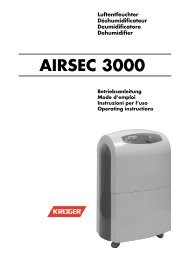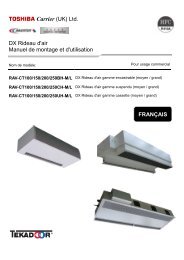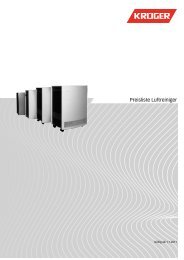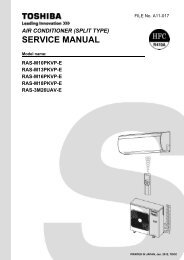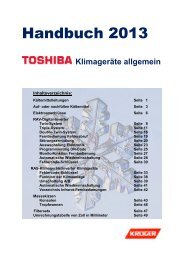SUPER DIGITAL
SUPER DIGITAL
SUPER DIGITAL
Create successful ePaper yourself
Turn your PDF publications into a flip-book with our unique Google optimized e-Paper software.
7-3. Tools<br />
7-3-1. Required Tools<br />
Refer to the “4. Tools” (Page 8)<br />
7-4. Recharging of Refrigerant<br />
When it is necessary to recharge refrigerant, charge the specified amount of new refrigerant according to the<br />
following steps.<br />
Recover the refrigerant, and check no refrigerant<br />
remains in the equipment.<br />
Connect the charge hose to packed valve service<br />
port at the outdoor unit’s gas side.<br />
When the compound gauge’s pointer has indicated<br />
–0.1 Mpa (–76 cmHg), place the handle Low in the<br />
fully closed position, and turn off the vacuum pump’s<br />
power switch.<br />
Connect the charge hose of the vacuum pump<br />
adapter.<br />
Keep the status as it is for 1 to 2 minutes, and ensure<br />
that the compound gauge’s pointer does not return.<br />
Open fully both packed valves at liquid and gas<br />
sides.<br />
Place the handle of the gauge manifold Low in the<br />
fully opened position, and turn on the vacuum pump’s<br />
power switch. Then, evacuating the refrigerant in the<br />
cycle.<br />
Set the refrigerant cylinder to the electronic balance,<br />
connect the connecting hose to the cylinder and the<br />
connecting port of the electronic balance, and charge<br />
liquid refrigerant.<br />
(For refrigerant charging, see the figure below.)<br />
1) Never charge refrigerant exceeding the specified amount.<br />
2) If the specified amount of refrigerant cannot be charged, charge refrigerant bit by bit in COOL mode.<br />
3) Do not carry out additional charging.<br />
When additional charging is carried out if refrigerant leaks, the refrigerant composition changes in the<br />
refrigeration cycle, that is characteristics of the air conditioner changes, refrigerant exceeding the<br />
specified amount is charged, and working pressure in the refrigeration cycle becomes abnormally high<br />
pressure, and may cause a rupture or personal injury.<br />
(INDOOR unit)<br />
(Liquid side)<br />
(OUTDOOR unit)<br />
Opened<br />
(Gas side)<br />
Refrigerant cylinder<br />
(With siphon pipe)<br />
Check valve<br />
Closed<br />
Open/Close valve<br />
for charging<br />
Service port<br />
Electronic balance for refrigerant charging<br />
Fig. 7-4-1 Configuration of refrigerant charging<br />
– 50 –



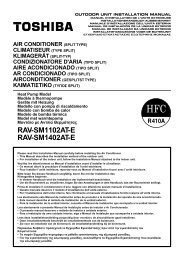
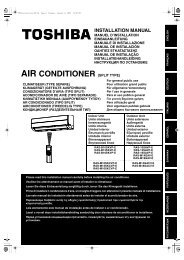
![Service-Handbuch [20522 kB]](https://img.yumpu.com/23967369/1/184x260/service-handbuch-20522-kb.jpg?quality=85)
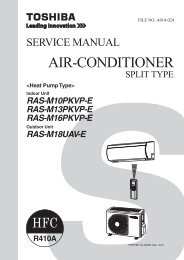
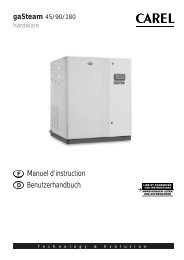
![Preisliste [3476 kB] - Krüger and Co](https://img.yumpu.com/23967351/1/184x260/preisliste-3476-kb-kra-1-4-ger-and-co.jpg?quality=85)
![Prospekt [1268 kB]](https://img.yumpu.com/23967350/1/184x260/prospekt-1268-kb.jpg?quality=85)
![Mode d'emploi [759 kB]](https://img.yumpu.com/23967349/1/184x260/mode-demploi-759-kb.jpg?quality=85)
![Mode d'emploi [4761 kB]](https://img.yumpu.com/23967346/1/184x260/mode-demploi-4761-kb.jpg?quality=85)
